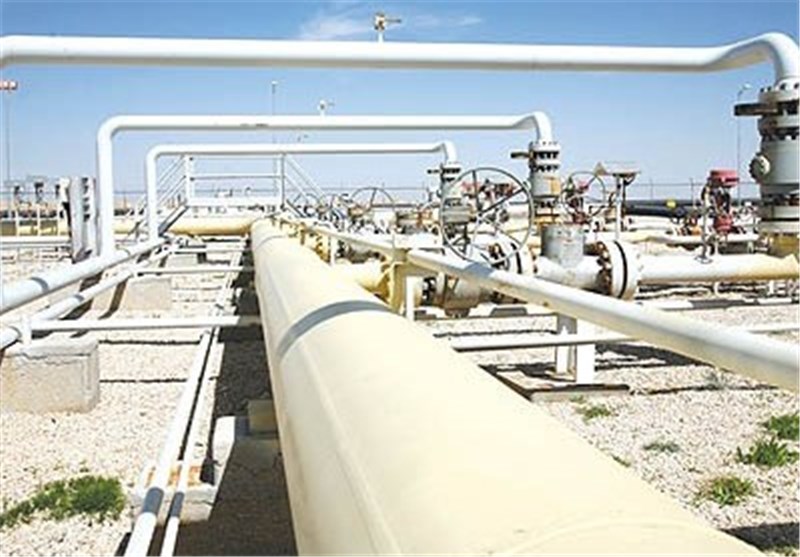Through swap operations, Iran will receive crude oil from the Caspian Sea littoral states at Neka Port and deliver the same volume to clients in the Persian Gulf at Kharg oil terminal.
The oil swap project was halted in June 2010 at the order of then minister of petroleum. But when Bijan Zangeneh took office as Iran's petroleum minister in 2013 he insisted on the revival of the project noting that oil swap would give Iran a more active role in the oil trading of Caspian Sea states.
In August 2017, the NIOC announced that oil swap had resumed at Neka Port in northern Iran and that several companies had discharged their oil there. More vessels are expected to discharge their oil cargoes at Neka Port. Iran is currently in talks with several companies for swap operations.
Crude oil is discharged at Neka Port. After miscibility and storage at the tanks of North Oil Terminals Company it will be pumped from Mazandaran Province to reach Tehran through a 272-kilometer pipeline.
Ready for Swap
Hosseini told reporters that the idea of oil swap was first raised in 1996 when the then presidents of Iran and Kazakhstan met. The oil swap project was finliazed in 2002.
He said that up to 500,000 b/d of oil could be handled for swap. "This company faces no problem in transferring this amount of oil and pipelines are thoroughly ready," he added.
Jafar Ebrahimi, head of Neka oil transfer center, said: "Since control systems and equipment used in this area are sophisticated we are ready to start transferring oil."
After oil swap was halted in northern Iran, IOPTC started smart pigging and safety operations on a regular basis on the pipeline stretching from north to Tehran in order to provide sustainable conditions.
Regular Pigging
Hosseini said: "Since 2010, we have regularly carried out maintenance and periodic maintenance in the oil pipelines so that we would be always ready."
He noted that the inoperability of swap imposed 50% extra costs on IOPTC.
Hosseini said foreign companies had been conducting pigging in the pipelines. "Of course, Iranian companies have been doing pigging alongside Russian companies. Recently, the pipeline of 32-inch diameter underwent pigging," he added.
Oil Storage Level
Hosseini said that several ships have so far discharged their oil at Neka Port, adding: "We are waiting for our oil storage to reach our desired level and then we can start the operation."
"When between 400,000 and 500,000 barrels of crude oil has been stored we will be able to start oil transfer operation at an average rate of 90,000 to 120,000 b/d," he said.
Hosseini said that the devices installed on the pipelines for swap operations were among the best used in this industry. "The company is only tasked with transferring oil to Tehran, but managing the consumption of this oil is not among the tasks of the company," he added.
Hosseini said the quality of oil imported from the Caspian Sea states was excellent, adding: "As soon as oil is entered its quality is analyzed and after transfer to Tehran the same amount of oil at the same quality would be delivered to customers at Kharg terminal."
Transferring crude oil imported from the Caspian Sea littoral states from Neka to refineries in Tehran and Tabriz is only one of tasks assigned to IOPTC. Other tasks upon IOPTC include delivery of petroleum products produced at Tehran refinery to distribution centers in Mazandaran and Golestan provinces, securing telecommunications in oil distribution centers and pressure relief valves in the two Northern provinces.
High-Pressure PSV
Operations for the transfer of crude oil and petroleum products in northern Iran are handled by five oil transmission centers (Neka, Sari, Gol Pol, Urim and Mergav), three pressure reducing valves (Veresk, Lajim and Ali-Abad) and three end facilities (Sari, Gorgan and Gonbad) via 620 kilometers of pipeline.
The pipeline mainly crosses through a treacherous area; therefore, its maintenance has become difficult, Hosseini said adding that the PSV in this area is under the highest pressure.
He said that IOPTC delivers 81.67 million liters per month of petroleum products to Golestan Province and 181 million liters to Sari.
The northern branch of IOPTC was established in 2006. It is based in the city of Sari in Mazandaran Province.
Courtesy of Iran Petroleum


Your Comment